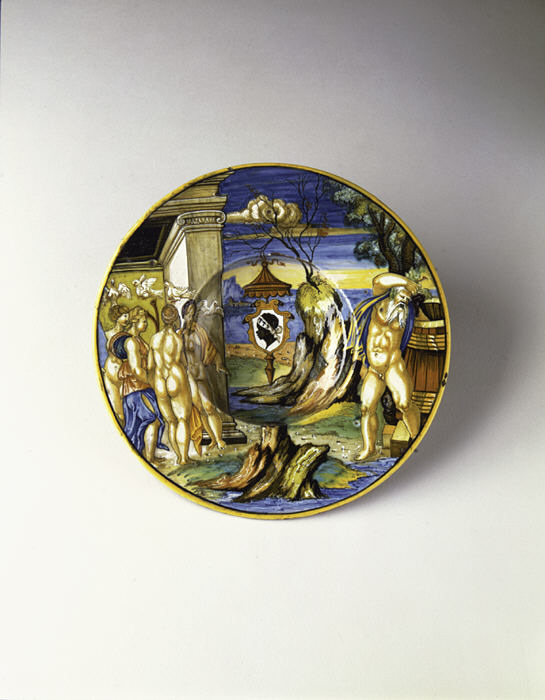Armorial dish: The story of King Anius
Francesco Xanto Avelli da Rovigo Italian
This plate formed part of one of the largest majolica services ever made, commissioned by Piero Maria Pucci (1467–1547), a member of a prominent Florentine family whose coat of arms features the head of a Black man in profile, a reference to their original surname, Saracini (meaning "Saracens"). Similar images had frequently appeared in European heraldry since the thirteenth century. Rooted in the subjugation of Muslims and peoples of Arab and African descent, this imagery often signified triumph in the Crusades or involvement in the slave trade. Here, a white band tied around the man’s head is inscribed with three T’s, an acronym for the Pucci family motto: Tempore tempora tempera (Time alleviates all troubles).
Thirty-seven pieces from the maiolica service survive (including four in the Lehman Collection: see also 1975.1.1131; 1975.1.1135; 1975.1.1137), all painted in Urbino by the celebrated maiolica painter Francesco Xanto Avelli da Rovigo in 1532 and 1533. Some pieces were sent to Gubbio to be completed with luster decoration under Xanto’s direction.
The plate depicts the story of King Anius’ daughters, who escaped imprisonment by Agamemnon when Dionysus turned them into doves.
Due to rights restrictions, this image cannot be enlarged, viewed at full screen, or downloaded.
This artwork is meant to be viewed from right to left. Scroll left to view more.



